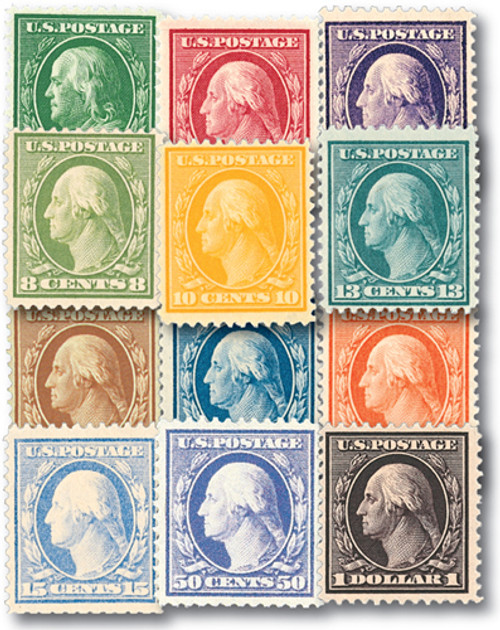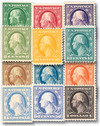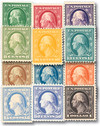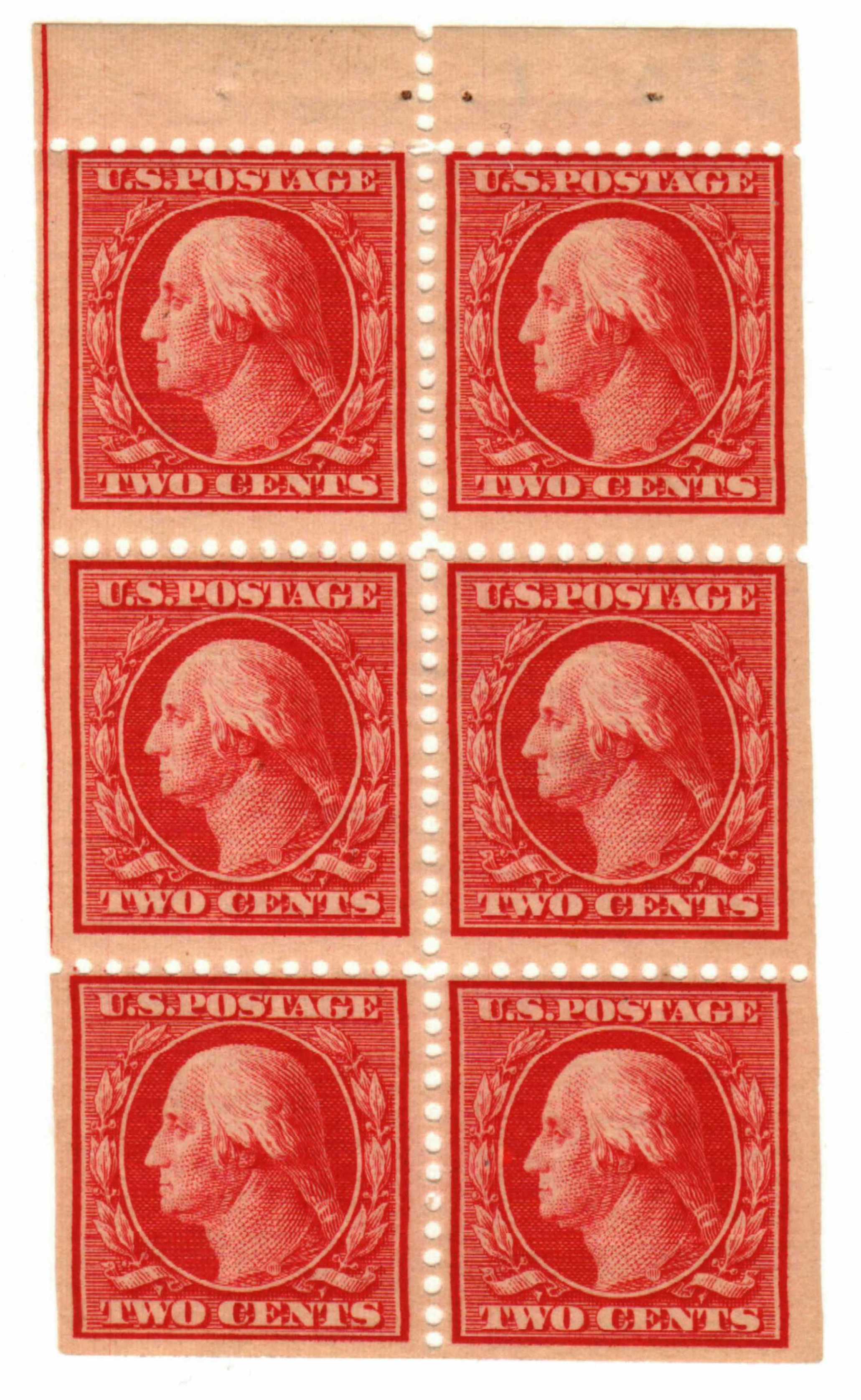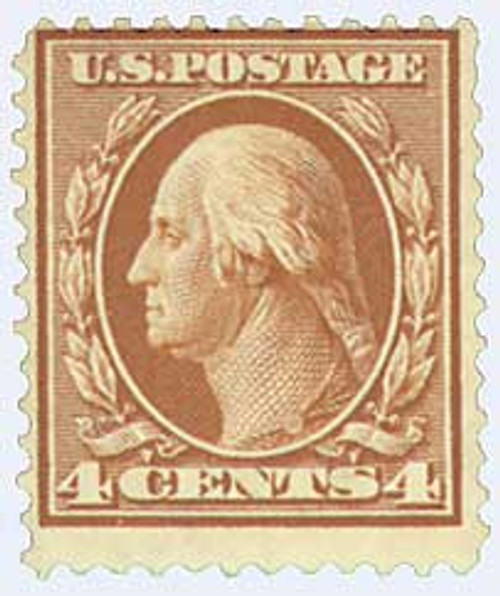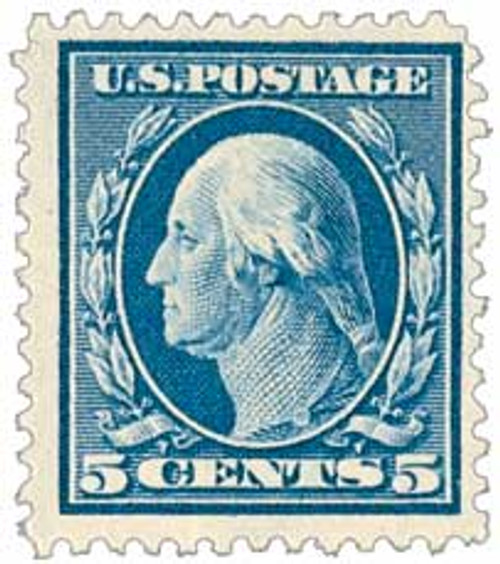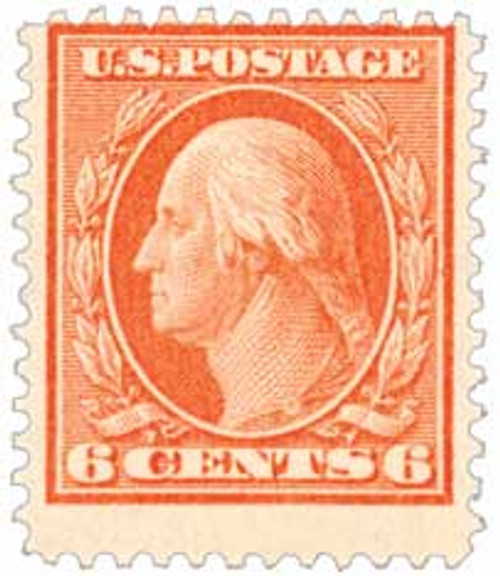
# 331-42 - Complete Set, 1908-09 Regular Issues, Set of 12 Stamps
SAVE on the Complete Series of 1908-09
Own the complete set of Third Bureau Issues and save money off Mystic’s U.S. Stamp Catalog price. Included in the 12-stamp set are the high-value 50¢ (1.8 million issued) and $1 Washington’s (just 313,590 issued). Now nearly a century old, these stamps will surely be hard to find in the near future.
After public complaints about the previous issue’s ornate designs, the Series of 1908-09 was designed with a cleaner, more modern look. Adopting the European custom of a single design of an existing monarch's head on many denominations – but having no monarch of our own, the U.S. Post Office chose two vignette designs, a Washington “head” and a Franklin “head.”
Take this opportunity to add the complete Series of 1908-09 and save time and money. Set includes 12 stamps that are essential to your U.S. stamp collection – so order right away.
Washington-Franklin Series
When the 1902 series was issued, the Post Office Department received numerous complaints from collectors, as well as the public, concerning the stamps’ poor designs. One particular gentleman, Charles Dalton, even wrote to his senator! He severely criticized the Stuart portrait of Washington currently in use on the 2¢ stamp and suggested the profile, taken from the bust by Jean Antoine Houdon, be put back into use.
Dalton also recommended that this portrait be used on all US issues. To support his idea, he used the example of Great Britain’s stamps, which all carried the profile portrait of King Edward VII. After careful consideration, the Postmaster General and Department officials adopted Mr. Dalton’s suggestions for the new 1908 series. The decision was made to keep Benjamin Franklin on the 1¢ stamp; however, his portrait was also to be in profile, modeled after Houdon’s bust.
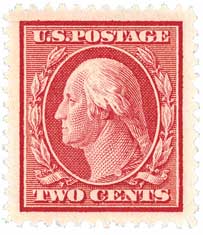
A simpler and more modern-looking border design was selected to be used on all denominations. The simplicity and uniformity of the new design greatly reduced production costs and extended the life of the steel printing plates. Due to lower international rates and higher weight limits per unit, the need for the $2 and $5 stamps diminished.
The first stamp in this new series, the carmine 2¢ Washington, was issued on November 16, 1908. With a design based on Houdon’s bust of Washington, US #332a paid the domestic letter rate for a one-ounce letter. Immediately upon its release, the stamp received positive feedback. However, people quickly noticed there was something wrong with the same. It didn’t follow the regulations established by the Universal Postal Union that required stamps have their denominations in numerals. Some expected the new stamp would be withdrawn from sale, but the Postmaster General announced it would not.
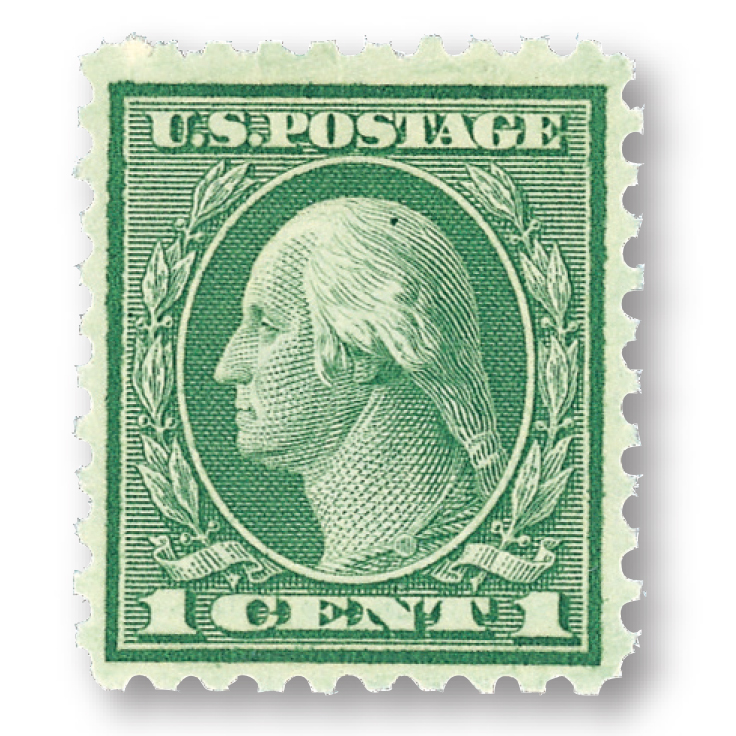
Early printings were made with plates featuring a standard spacing of 2mm between the stamps, a marginal imprint of the Bureau of Engraving and Printing, and a plate number. About 10% of the sheets had to be discarded because paper shrinkage caused faulty perforations. To fix the problem, star plates were introduced with 3mm vertical spacing between the six outer rows on each side of the full sheet of 400 subjects. The rest of the spaces remained at 2mm since the inner stamps were less impacted by shrinkage. This new process decreased the waste to about 1%.
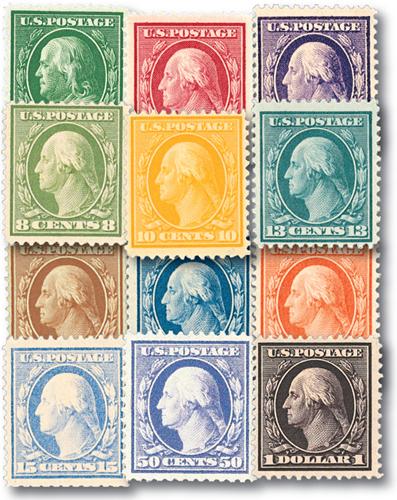
When the Post Office Department issued the 1908 series, there were not enough different color inks for each denomination. Therefore, various shades of each color were used. For example, the 1¢ and 8¢ were both printed in green, and the 3¢ and 50¢ in purple, and the 5¢ and 15¢ in blue. Postal clerks complained that the stamps were too similar, making them difficult to distinguish, especially if they were in a hurry. In addition, the poor artificial lights hindered their ability to differentiate between the subtle shades.
Experiments were conducted using different inks printed on colored paper. These tests, however, determined this was not an effective solution to the problem. Finally, it was decided that the series should simply be split in half. The first seven stamps in the Series of 1912 (1¢ – 7¢) carried the portrait of George Washington, while the remaining stamps (8¢ – $1) pictured our first postmaster general. The stamps bearing Benjamin Franklin’s picture were given a new border design, which like the previous one, was simple yet artistic.
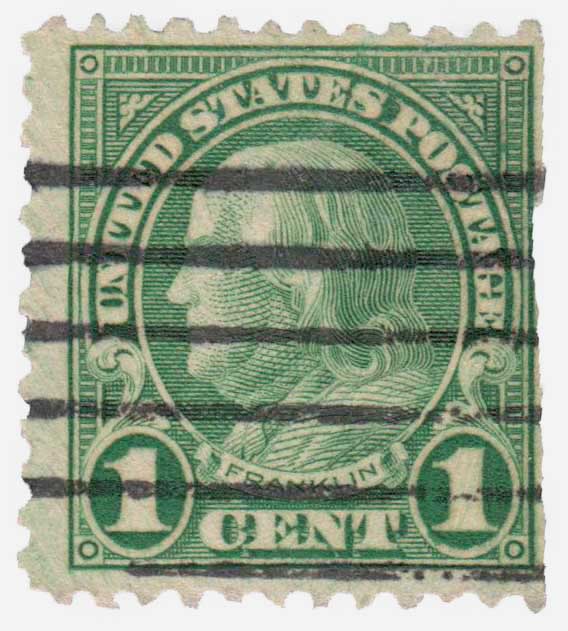
The Washington-Franklin stamps were meant to simplify postage but resulted in 220 major and 99 minor stamp varieties. These stamps utilize five different designs, two paper types, three printing methods, at least 14 perforations, several colors, and 20 denominations.
Click here to see the rest of the Washington-Franklin stamps and learn about their differences in our online catalog.
Click here to save time and money with a wide selection of Washington-Franklin sets.
SAVE on the Complete Series of 1908-09
Own the complete set of Third Bureau Issues and save money off Mystic’s U.S. Stamp Catalog price. Included in the 12-stamp set are the high-value 50¢ (1.8 million issued) and $1 Washington’s (just 313,590 issued). Now nearly a century old, these stamps will surely be hard to find in the near future.
After public complaints about the previous issue’s ornate designs, the Series of 1908-09 was designed with a cleaner, more modern look. Adopting the European custom of a single design of an existing monarch's head on many denominations – but having no monarch of our own, the U.S. Post Office chose two vignette designs, a Washington “head” and a Franklin “head.”
Take this opportunity to add the complete Series of 1908-09 and save time and money. Set includes 12 stamps that are essential to your U.S. stamp collection – so order right away.
Washington-Franklin Series
When the 1902 series was issued, the Post Office Department received numerous complaints from collectors, as well as the public, concerning the stamps’ poor designs. One particular gentleman, Charles Dalton, even wrote to his senator! He severely criticized the Stuart portrait of Washington currently in use on the 2¢ stamp and suggested the profile, taken from the bust by Jean Antoine Houdon, be put back into use.
Dalton also recommended that this portrait be used on all US issues. To support his idea, he used the example of Great Britain’s stamps, which all carried the profile portrait of King Edward VII. After careful consideration, the Postmaster General and Department officials adopted Mr. Dalton’s suggestions for the new 1908 series. The decision was made to keep Benjamin Franklin on the 1¢ stamp; however, his portrait was also to be in profile, modeled after Houdon’s bust.

A simpler and more modern-looking border design was selected to be used on all denominations. The simplicity and uniformity of the new design greatly reduced production costs and extended the life of the steel printing plates. Due to lower international rates and higher weight limits per unit, the need for the $2 and $5 stamps diminished.
The first stamp in this new series, the carmine 2¢ Washington, was issued on November 16, 1908. With a design based on Houdon’s bust of Washington, US #332a paid the domestic letter rate for a one-ounce letter. Immediately upon its release, the stamp received positive feedback. However, people quickly noticed there was something wrong with the same. It didn’t follow the regulations established by the Universal Postal Union that required stamps have their denominations in numerals. Some expected the new stamp would be withdrawn from sale, but the Postmaster General announced it would not.

Early printings were made with plates featuring a standard spacing of 2mm between the stamps, a marginal imprint of the Bureau of Engraving and Printing, and a plate number. About 10% of the sheets had to be discarded because paper shrinkage caused faulty perforations. To fix the problem, star plates were introduced with 3mm vertical spacing between the six outer rows on each side of the full sheet of 400 subjects. The rest of the spaces remained at 2mm since the inner stamps were less impacted by shrinkage. This new process decreased the waste to about 1%.

When the Post Office Department issued the 1908 series, there were not enough different color inks for each denomination. Therefore, various shades of each color were used. For example, the 1¢ and 8¢ were both printed in green, and the 3¢ and 50¢ in purple, and the 5¢ and 15¢ in blue. Postal clerks complained that the stamps were too similar, making them difficult to distinguish, especially if they were in a hurry. In addition, the poor artificial lights hindered their ability to differentiate between the subtle shades.
Experiments were conducted using different inks printed on colored paper. These tests, however, determined this was not an effective solution to the problem. Finally, it was decided that the series should simply be split in half. The first seven stamps in the Series of 1912 (1¢ – 7¢) carried the portrait of George Washington, while the remaining stamps (8¢ – $1) pictured our first postmaster general. The stamps bearing Benjamin Franklin’s picture were given a new border design, which like the previous one, was simple yet artistic.

The Washington-Franklin stamps were meant to simplify postage but resulted in 220 major and 99 minor stamp varieties. These stamps utilize five different designs, two paper types, three printing methods, at least 14 perforations, several colors, and 20 denominations.
Click here to see the rest of the Washington-Franklin stamps and learn about their differences in our online catalog.
Click here to save time and money with a wide selection of Washington-Franklin sets.

